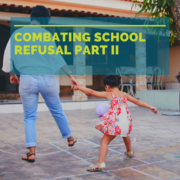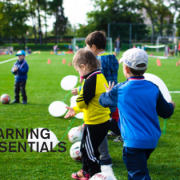Combating School Refusal: Part II
In Part I, we discussed that school refusal involves more than stubborn non-compliance and cutting school to spend time with friends. School refusal stems from psychological stressors that, for whatever reason, are triggered by the school environment. While school refusal can be a result of many different factors from child to child, there are universally effective strategies that families can utilize.
Managing School Refusal
- Ask your child why he or she is anxious about going to school. This conversation must come from a calm and understanding place—you cannot show frustration, anger, disappointment, or judgment when seeking to understand the underlying issues. Let children know that you support them by legitimizing their concerns, but that you need to know where their nerves are coming from in order to help. Ask whether this began with an isolated incident with a teacher or peer, or if the triggers are truly unknown.
- Talk to the school about what is going on. School refusal becomes a bigger issue when teachers are left in the dark. When the school is aware of the underlying anxieties that a student might be dealing with, they will take extra precautions to make sure the student is handled with “kid gloves” during his or her time at school. The school can also help to manage the student’s workload if he or she is missing major assignments due to stress and anxiety about coming to school. On occasion, the school might recommend a half-day or partial schedule so that the student is receiving important instruction in small doses. The school can also work to arrange supports for parents who may be looking into an IEP or 504 plan to ensure accommodations are provided.
- Plan for small successes and occasional setbacks when your child makes it to school. The anxieties will never dissipate overnight, so it is normal for a child to try to attend school, but then become overwhelmed and ask to go home. This is okay. As a parent, you want to make sure you’re acknowledging your child’s effort and bravery for attempting something that you know is difficult and scary. The process of re-entering school on a regular schedule isn’t going to be swift. Therefore, your best move is to celebrate the small steps and gently encourage them to move forward with their progress.
- Consider hiring a tutor to help manage the workload that is accumulating due to your child’s frequent absences. The tutor can also, with your permission, act as a liaison between the school and home to ensure that academic goals are being met. The mounting workload can make students even more anxious because they know that, when they return to school, they’ll be confronted with a pile of work. This can make for a never-ending issue of avoiding school because of the stress of all the work from missing school in the first place. The tutor can work with your child in the comfort of your home and help to manage the assignments and tasks, while also providing 1:1 instruction for skills that are necessary for meeting grade-level objectives.












